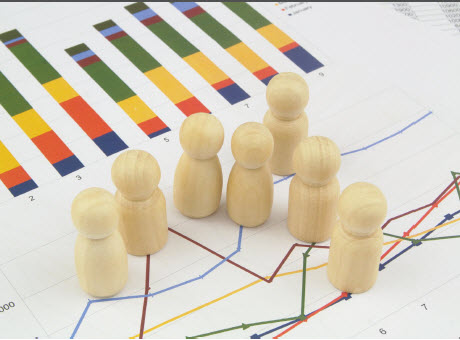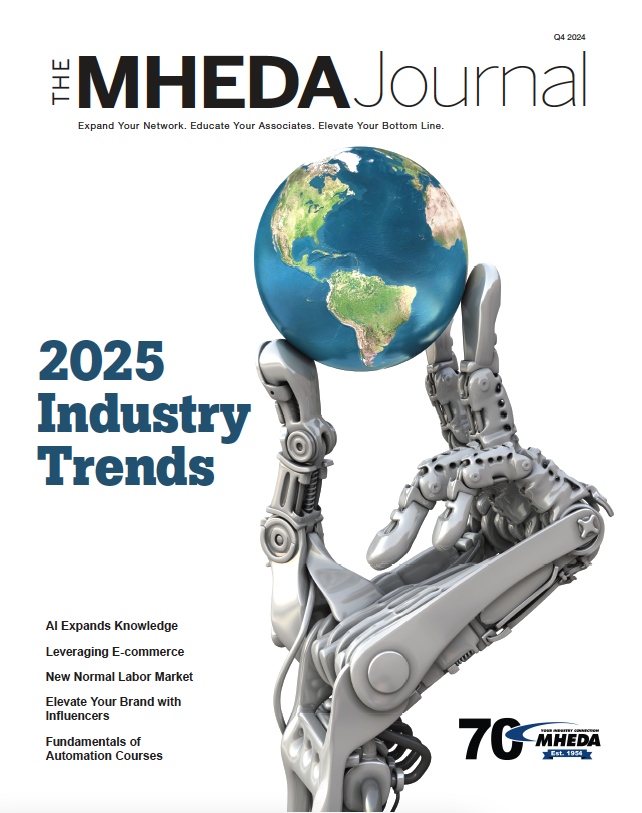The Economy and Demography: How They Work Together
February 27, 2023
By Nicole Needles
 The economy is intangible. It is a manufactured concept that we cannot see but see its effects. Even though the economy is all about money – where it’s going, who it’s going to, how it’s affecting businesses – behind all of it is not money or numbers. It’s people. The habits, behaviors and actions of people are what drive our world. 2023 will be no different.
The economy is intangible. It is a manufactured concept that we cannot see but see its effects. Even though the economy is all about money – where it’s going, who it’s going to, how it’s affecting businesses – behind all of it is not money or numbers. It’s people. The habits, behaviors and actions of people are what drive our world. 2023 will be no different.
Ken Gronbach is a former ad agency president turned demographer after realizing how drastically generational shifts affected his and his wife’s 140 Honda motorcycle dealerships’ clients in 1986. The age group they were marketing to – 18- to 24-year-olds – were outgrowing motorcycles, trading them in for minivans and settling down. The huge Baby Boomer generation had simply aged out of the motorcycle market. This reckoning sparked an interest in Gronbach to figure out the reason behind these fluctuations.
Several economic trends are coming in 2023 that Gronbach highlighted and how these trends are caused by and will affect people. As he says, economics is a subset of demographics, not the other way around. When new generations enter, old generations leave, people move around, and the economy will reflect that. This turnover will affect not only consumers but MHEDA members and their associations. Knowing what’s coming and having the resources to keep up with the ever-changing tides is a significant first step for association planning.
Incoming Generations
Gronbach says that Millennials and Generation Z will bring many changes to the economy. Not only will this take effect in 2023, but it will also continue in the coming years. Millennials differ exponentially from the generations that came before them. Generation Z varies even more than that. Currently, 88 million Millennials, aged 18 to 24 years old, are growing up and are in a position to change the economy and culture.
Growing Talent Pools
Even though Millennials are behind when it comes to leaving home, getting married and starting a family – this is happening in their 30s rather than their 20s – they will be the largest talent pool the country has seen since the Baby Boomers. This influx is because there are roughly 10 million more Millennials than Baby Boomers. By default, there will be more people to fill jobs than in the past. Gronbach says since there haven’t been this many members of a generation since the baby boomer generation, and we will see the economy respond as a result.
Continuing Supply Chain Issues
Every industry and business has felt the weight of supply chain issues for the past few years. However, Gronbach says this isn’t a new problem and, to some extent, people will continue feeling the effects, but it won’t be forever. Supply chain issues ebb and flow naturally over the years and are inevitable. Market economies adjust rapidly.
“I went to California State University Long Beach. From the top of the buildings at CSULB you can see the ocean. What was out there when I graduated college? Ships are waiting to be unloaded, which means there was a problem then. And that was decades ago,” Gronbach said. “And it’s a problem now. Is it going to be insurmountable? Is it going to crush our economy? No, we’re fine. When you have a market economy, where people make money selling stuff, we always find a way.”
Inflation to Come
According to Gronbach, the dwindling population in China will affect manufacturing in the United States. Instituted in 1979, the one-child rule in China has resulted in a population deficit of 500,000,000 people under 40. This population flux adversely affects the labor pool and production of goods sent to the U.S. The states will be taking on more manufacturing of products that are commonly imported. Since the labor rates in America are higher, producing these goods will be more expensive.
“There’s this new concept called reshoring. Reshoring means whatever we sent overseas to be manufactured is going to come back. As it comes back, the economy of the United States is going to flourish. But what’s it going to do? We can’t produce as cheap as China here. So we are going to face in the United States an inflation that we don’t understand, but we’ll survive because things are going to cost more, period,” Gronbach said.
Social Shifts
Gronbach says the midterm elections were very telling for governmental, social and, therefore, economic changes that will be coming as younger generations rise. He predicts our country will make a blue shift to primarily liberal legislation.
“We’re losing a conservative every 16 seconds because they’re dying. If you look at the spectrum of liberals to conservatives, you start off as a liberal when you’re born, and you end as a conservative when you die. That’s just the way it is,” he said.
This fact is important because any social shifts will affect legislation that will lead to changes within associations. Keeping up-todate with these changes will be crucial in making plans for associations and members.
Rising generations are effecting change when it comes to making room for everyone and ensuring that everyone’s voices are heard. Because of this, another crucial demographic change to note is that diversity, equity and inclusion are becoming more of a priority in businesses and employment, marketing, advertising and entertainment. These changes inadvertently have effects on manufacturing, seen or unseen.
Gronbach urges businesses and associations to put time, energy and money into supporting a charity that the employees and leadership are passionate about. More activism within companies is becoming a priority and can benefit businesses’ plans. Not only is it just a good thing to do, but younger generations look for how businesses are authentic and use their power to effect change.
“I encourage businesses absolutely, positively to embrace a charity. An important charity. So it looks like they care about more than money. Because that is what is going to be expected of them from the culture,” he said.
How to Handle These Changes
Gronbach advises associations handling all of these changes to know who their end user is. This user is not the person who buys a product but the person who uses it. It’s not always easy in the manufacturing industry to separate the end user from the buyer. It is not always clear where a product goes. Knowing this information, tracking trends and acting on them is significant when facing economic and demographic changes. A single party or group does not have any control over this, but association leaders have the opportunity to react appropriately.
This concept is what Gronbach learned from the dwindling of his motorcycle dealership market. When he realized a gap in sales simply because people were aging, he added a complementary skill to his marketing knack: demography. A combination of knowledge of the two is how to make a solid plan.
“Google the question ‘what’s the most important question in marketing?’ And the most important question in marketing is, ‘how big is my end-user group?’ And is it getting bigger or smaller?” He said.
Conclusion
Overall, Gronbach says it’s important for associations and the general population to embrace change. Moving with the differences instead of going against them will be integral to success.
“The word ‘change’ is just very, very painful for us. We don’t like to change. Humans don’t like to change; humans like things to stay the way they are,” he said.
Demographic changes ignite new eras that will come with growing pains. Embracing changes, rolling with the punches and supporting each other have gotten many through the last few years. Keeping this strategy will make alterations in 2023 and beyond an opportunity rather than something to be feared.
About the Author: Nicole Needles is Editor of The MHEDA Journal and a graduate of the University of Florida School of Journalism.






